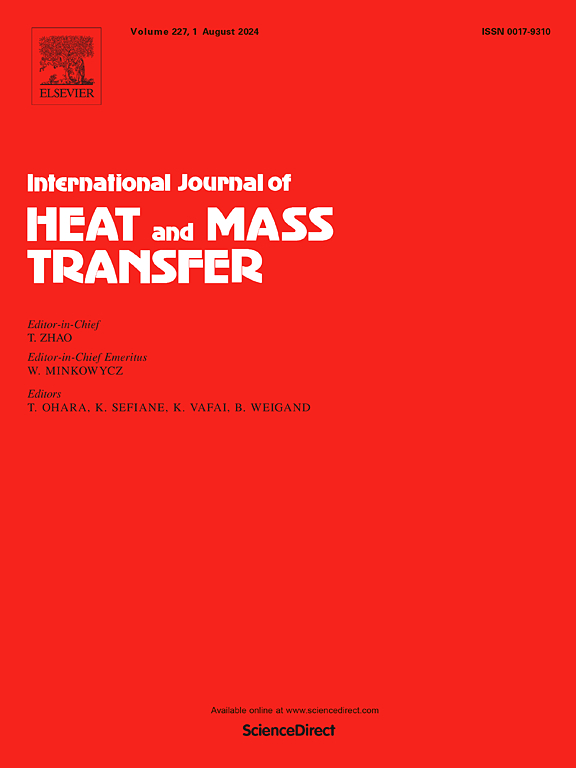A novel vapor chamber with gradient capillary wick and larger expansion area
IF 5
2区 工程技术
Q1 ENGINEERING, MECHANICAL
International Journal of Heat and Mass Transfer
Pub Date : 2025-04-09
DOI:10.1016/j.ijheatmasstransfer.2025.127021
引用次数: 0
Abstract
As chip integration and performance increased, power consumption grew, making thermal management critical. While vapor chambers offered efficient heat transfer, uniform heat distribution, and simple structures, the capillary force of grooved and mesh designs were insufficient to meet higher cooling demands, highlighting the need for more efficient technologies. This study presents a longitudinally gradient sintered capillary copper-based vapor chamber to overcome the limitations of traditional grooved and mesh structures, enhancing liquid transport and accelerating the internal cycle for improved liquid supply to the evaporation zone. The working fluid employed in the experimental setup consisted of deionized water, making the design suitable for higher heat flux and power conditions. Thermal characterization of the vapor chamber was conducted through a liquid cooling plate, and the effects of different inclination angles and coolant temperatures on performance were systematically studied. Experimental results showed that inclination angle had little effect on performance, with thermal resistance increasing by only 0.007 K/W when operated vertically compared to horizontally. Additionally, raising the coolant temperature significantly improved heat transfer performance, reducing thermal resistance by 26.1 % at 40 °C compared to 20 °C. Furthermore, Experimental results demonstrated that the vapor chamber maintained stable functionality under power inputs reaching up to 1200 W. corresponding to a heat flux of 240 W/cm², at this time, the thermal resistance was 0.047K/W, indicating its potential for managing extremely high-power chips.
求助全文
约1分钟内获得全文
求助全文
来源期刊
CiteScore
10.30
自引率
13.50%
发文量
1319
审稿时长
41 days
期刊介绍:
International Journal of Heat and Mass Transfer is the vehicle for the exchange of basic ideas in heat and mass transfer between research workers and engineers throughout the world. It focuses on both analytical and experimental research, with an emphasis on contributions which increase the basic understanding of transfer processes and their application to engineering problems.
Topics include:
-New methods of measuring and/or correlating transport-property data
-Energy engineering
-Environmental applications of heat and/or mass transfer

 求助内容:
求助内容: 应助结果提醒方式:
应助结果提醒方式:


